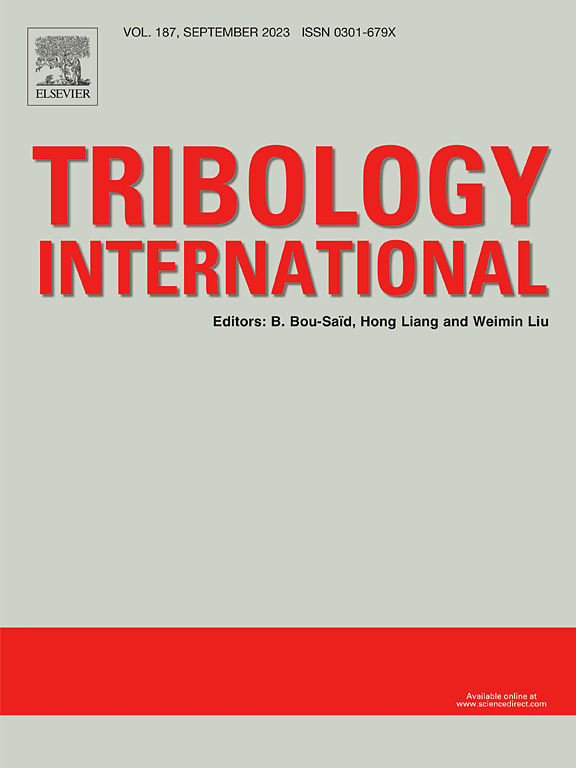Characteristics of tribofilm growth and interfacial friction of DPP and ZDDP anti-wear additives at different temperatures
IF 6.1
1区 工程技术
Q1 ENGINEERING, MECHANICAL
引用次数: 0
Abstract
In this study, a Mini Traction Machine (MTM) equipped with the Spacer Layer Interferometry iMaging (SLIM) technique was used to in-situ monitor the formation process of protective (tribo-)films of two anti-wear additives, an ashless dibutyl dithiophosphate (DDP) and a classical zinc dibutyl dithiophosphate (ZDDP). The growing processes of DDP and ZDDP protective films on metallic rubbing surfaces across different lubrication regimes, as well as their influences on the interfacial friction, were investigated by measuring the Stribeck curves repeatedly at different temperatures. In contrast to the ZDDP additive which forms a tribofilm through tribo-chemical reactions activated by thermo-mechanical effects at rubbing interfaces, the DDP additive primarily forms physically adsorbed and thermal films under the studied operating conditions. The DDP protective films exhibit a rapid growth rate, and it is relatively temperature-insensitive, demonstrating superior anti-wear performance. Compared with the fact that ZDDP tribofilms increase the interfacial friction, the adsorption and thermal films formed by the DDP additive show pronounced friction-reduction performance in boundary and mixed lubrication regimes.
求助全文
约1分钟内获得全文
求助全文
来源期刊

Tribology International
工程技术-工程:机械
CiteScore
10.10
自引率
16.10%
发文量
627
审稿时长
35 days
期刊介绍:
Tribology is the science of rubbing surfaces and contributes to every facet of our everyday life, from live cell friction to engine lubrication and seismology. As such tribology is truly multidisciplinary and this extraordinary breadth of scientific interest is reflected in the scope of Tribology International.
Tribology International seeks to publish original research papers of the highest scientific quality to provide an archival resource for scientists from all backgrounds. Written contributions are invited reporting experimental and modelling studies both in established areas of tribology and emerging fields. Scientific topics include the physics or chemistry of tribo-surfaces, bio-tribology, surface engineering and materials, contact mechanics, nano-tribology, lubricants and hydrodynamic lubrication.
 求助内容:
求助内容: 应助结果提醒方式:
应助结果提醒方式:


